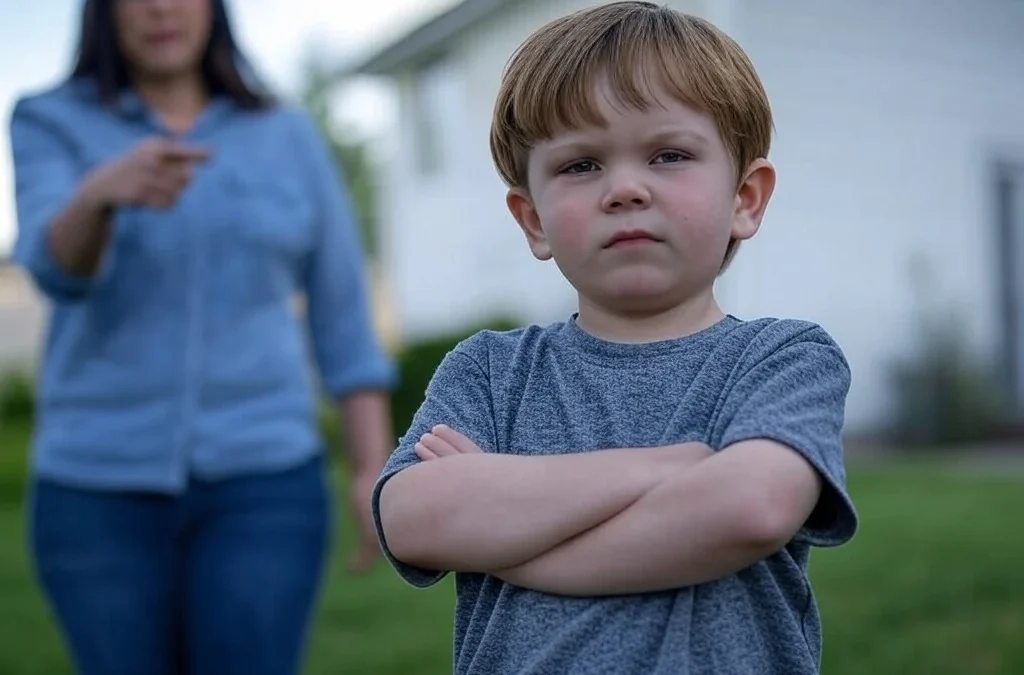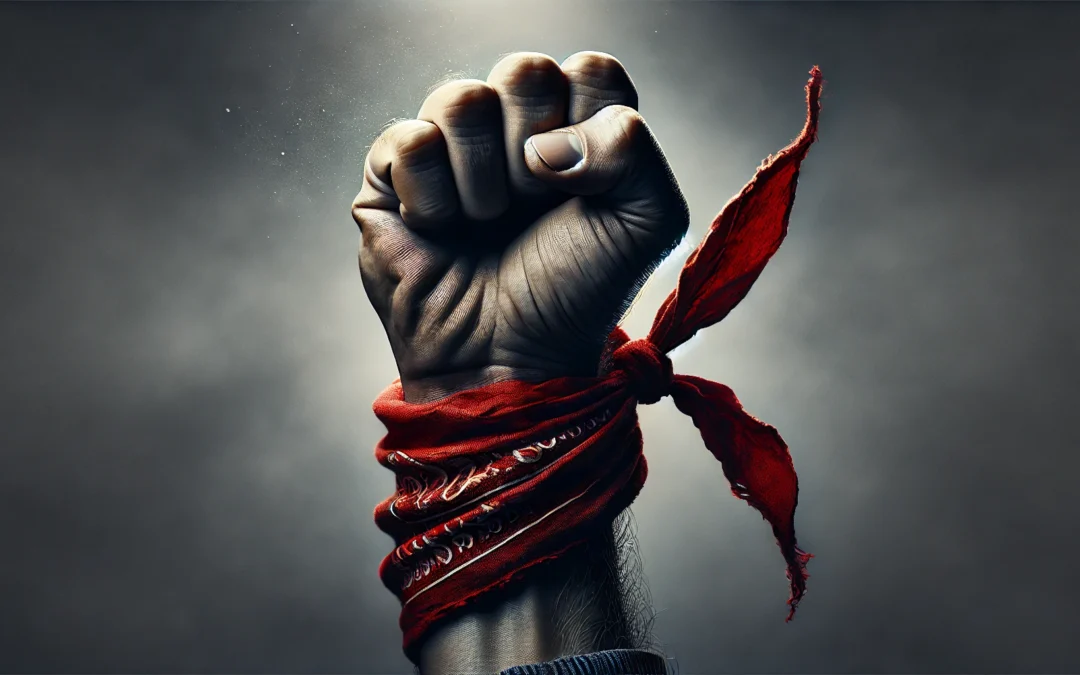Rebellion is something many of us have experienced, whether it was sneaking out past curfew as a teenager or questioning the status quo at work. It’s a natural part of life, often driven by a desire for change or a sense of injustice. Throughout history, acts of rebellion have sparked movements, challenged norms, and sometimes even changed the world. From small acts of defiance to large-scale revolutions, rebellion has played a crucial role in shaping societies. It’s fascinating to see how these acts of rebellion, big or small, come from the same human spirit of wanting something better or different.
Think of the massive gatherings during the Tea Party movement in the United States, where citizens peacefully protested high taxes and government overreach, or the trucker protests in Canada, where drivers stood against pandemic-related mandates. These modern examples show how rebellion takes many forms, from organized demonstrations to grassroots movements. While not every act of defiance leads to sweeping change, they all highlight the courage it takes to challenge authority. In this article, we’ll look at 30 examples of rebellion, focusing on the diverse ways people have stood up for their beliefs in recent history. These stories will resonate with anyone curious about the enduring human drive to resist and reform.
Understanding Rebellion
Rebellion is a term that denotes the act of resisting authority, control, or tradition. It is often characterized by an organized attempt to overthrow or undermine an established government or political system. At its core, rebellion involves a conscious and deliberate decision by individuals or groups to reject the status quo and advocate for change, often through radical or confrontational means.
Rebellion can manifest in various forms, ranging from peaceful protests and civil disobedience to armed uprisings and revolutions. The motivations behind rebellion are diverse and can include a desire for political freedom, social justice, economic equality, or cultural autonomy. Historically, rebellions have played a crucial role in shaping societies by challenging oppressive regimes and sparking significant social and political transformations.
The concept of rebellion is not limited to political contexts; it can also occur in cultural or social settings where individuals or groups resist prevailing norms or expectations. For example, artistic or cultural rebellions may arise in response to perceived constraints on creativity or expression.
The Best Examples of Rebellion
Rebellion has taken countless forms throughout history, from peaceful protests to armed uprisings. Here are 30 powerful examples that show how individuals and groups have stood against authority to demand change and reshape societies.
1. The American Revolution
The American Revolution was a pivotal rebellion where the thirteen American colonies rejected British rule. Tired of unfair taxation without representation, the colonies banded together to fight for their independence. This rebellion led to the birth of the United States and inspired other nations to challenge oppressive regimes.
2. The Gamestop Stock Rebellion (2021)
In a surprising financial revolt, retail investors on platforms like Reddit bought shares of GameStop to challenge Wall Street hedge funds betting against the company. This “rebellion” disrupted the stock market and exposed flaws in financial systems. It empowered small investors and sparked discussions about fairness in the financial industry.
3. Trucker Protests in Canada (2022)
Truck drivers in Canada protested against COVID-19 vaccine mandates for cross-border travel. Known as the Freedom Convoy, they drove to Ottawa, blocking roads and demanding an end to government-imposed restrictions. This peaceful protest drew international attention and sparked debates about personal freedoms and public health policies. For weeks, it became a symbol of frustration against perceived government overreach.
4. Warsaw Uprising (1944)
The Warsaw Uprising was a courageous rebellion against Nazi German occupation during World War II. Polish resistance fighters, under the leadership of the Home Army, sought to liberate Warsaw before the advancing Soviet forces arrived. For 63 days, they fought valiantly, despite being heavily outgunned. The uprising was ultimately crushed, and the city was left in ruins, but it became a symbol of defiance and a deep yearning for freedom.
5. The Civil Rights Movement
The Civil Rights Movement in the United States was a powerful rebellion against racial segregation and discrimination. Figures like Martin Luther King Jr. and Rosa Parks led nonviolent protests demanding equal rights for African Americans. This movement resulted in significant legal and social changes, including the Civil Rights Act of 1964.
6. The French Revolution
The French Revolution was a period of radical social and political upheaval in France. The common people rose against the monarchy and aristocracy, demanding equality, liberty, and fraternity. This rebellion ended centuries of feudal rule and led to the rise of democratic ideals across Europe.
7. The Indian Independence Movement
The Indian Independence Movement was a rebellion against British colonial rule. Leaders like Mahatma Gandhi advocated for nonviolent resistance, encouraging Indians to boycott British goods and institutions. This widespread rebellion eventually led to India’s independence in 1947, inspiring other colonies to seek freedom.
8. The Hungarian Revolution (1956)
Hungary’s uprising against Soviet control was a bold attempt to gain political freedom. Citizens and students demanded the withdrawal of Soviet troops and reforms in the government. For two weeks, Hungary tasted freedom before Soviet tanks rolled in to crush the rebellion. The revolution showed the world the brutal lengths to which oppressive regimes would go to maintain power.
9. The Student Protests of 1968
In 1968, students worldwide rebelled against established authorities, demanding social and political reforms. In countries like France, the United States, and Mexico, students organized demonstrations and strikes. These protests highlighted issues like civil rights, anti-war sentiments, and educational reform.
10. The Whiskey Rebellion (1794)
In the early United States, farmers in western Pennsylvania protested against a federal excise tax on whiskey. They argued the tax was unfairly targeting small producers. Tensions escalated to violent clashes before President George Washington led a militia to suppress the rebellion. This event demonstrated the federal government’s commitment to enforcing its laws while exposing the growing pains of a young republic.
11. The Tiananmen Square Protests
In 1989, students in China led a rebellion demanding political reform and greater freedoms. The protests culminated in a massive gathering at Tiananmen Square in Beijing. While the Chinese government ultimately suppressed the rebellion, it remains a symbol of the struggle for democracy and human rights in China.
12. The Haitian Revolution
The Haitian Revolution was a monumental slave rebellion that took place in the French colony of Saint-Domingue. Beginning in 1791, enslaved Africans rose against their oppressors, ultimately leading to the establishment of Haiti as the first independent black republic in 1804. This rebellion was a landmark in the fight against slavery and colonialism, influencing other liberation movements across the globe.
13. The Gilets Jaunes (Yellow Vests) Movement (2018–2020)
In France, the Yellow Vests movement began as a protest against fuel tax hikes but expanded to address economic inequality and government policies. Protesters donned reflective yellow vests, blocking roads and staging demonstrations. The movement, largely peaceful but at times confrontational, reflected widespread discontent among working-class citizens. It forced the government to reassess its policies and priorities.
14. The Spartacus Revolt
The Spartacus Revolt, also known as the Third Servile War, was a major slave uprising against the Roman Republic from 73 to 71 BCE. Led by the gladiator Spartacus, thousands of slaves sought freedom and justice, challenging the might of Rome. While the rebellion was ultimately crushed, it highlighted the brutal conditions under which slaves lived and inspired future generations to question authority.
15. The Zapatista Uprising
In 1994, the Zapatista Army of National Liberation (EZLN) launched an uprising in the Mexican state of Chiapas. The indigenous group protested against neoliberal policies and demanded greater rights for indigenous peoples. Their rebellion drew international attention to issues of social justice and indigenous rights, sparking broader discussions on economic inequality and autonomy.
16. The Prague Spring
The Prague Spring of 1968 was a period of political liberalization in Czechoslovakia. Reformist leader Alexander Dubček sought to create “socialism with a human face,” introducing democratic reforms and loosening state control. However, the Soviet Union perceived these changes as a threat and invaded to crush the rebellion. Despite its suppression, the Prague Spring inspired future movements for freedom in Eastern Europe.
17. The Mau Mau Uprising
From 1952 to 1960, the Mau Mau Uprising was a revolt by Kenyan freedom fighters against British colonial rule. Primarily involving the Kikuyu people, the rebellion aimed to reclaim land and rights taken by colonial authorities. The uprising was met with brutal suppression, but it played a crucial role in Kenya’s eventual path to independence in 1963.
18. The Velvet Revolution
The Velvet Revolution of 1989 was a non-violent uprising in Czechoslovakia that led to the end of communist rule. Citizens took to the streets, demanding democratic reforms and the resignation of the authoritarian government. The peaceful nature of the protests led to a smooth transition to democracy, serving as an example of how nonviolent rebellion can achieve profound political change.
19. The Taiping Rebellion
The Taiping Rebellion, which lasted from 1850 to 1864, was a massive civil war in southern China. Led by Hong Xiuquan, who claimed to be the brother of Jesus Christ, the rebellion sought to overthrow the Qing dynasty and establish a “Heavenly Kingdom of Peace.” Although it ultimately failed, the rebellion caused profound social and economic disruptions and remains one of the deadliest conflicts in history.
20. The Irish Easter Rising
In 1916, the Easter Rising was a pivotal rebellion against British rule in Ireland. Irish nationalists seized key locations in Dublin, proclaiming an independent Irish Republic. Although the uprising was quickly suppressed, it galvanized support for Irish independence, leading to the eventual establishment of the Irish Free State in 1922.
21. The Samoan Mau Movement
The Mau Movement in Samoa was a non-violent rebellion against New Zealand’s colonial administration in the early 20th century. Samoans demanded self-governance and cultural preservation, organizing peaceful protests and civil disobedience. Despite facing violent repression, the movement persisted, ultimately contributing to Samoa’s independence in 1962.
22. The Sepoy Mutiny (1857)
Also known as the Indian Rebellion of 1857, this uprising began among Indian soldiers (sepoys) in the British East India Company’s army. The rebellion was sparked by cultural and religious insensitivity but grew into a larger movement against colonial rule. Though it was ultimately unsuccessful, the rebellion highlighted the deep resentment of British authority, paving the way for later independence movements.
23. The Amistad Slave Rebellion (1839)
A group of African captives aboard the Spanish ship Amistad rebelled, taking control of the vessel. Led by Sengbe Pieh (known as Cinqué), they aimed to return to Africa but were captured off the U.S. coast. The subsequent legal battle became a landmark case in the fight against slavery, as the U.S. Supreme Court ultimately ruled in favor of the captives’ freedom.
24. The Arab Spring
The Arab Spring was a series of anti-government protests and uprisings in the Arab world during the early 2010s. Citizens in countries like Tunisia, Egypt, and Libya rebelled against authoritarian regimes, demanding democracy and human rights. Outcomes were mostly tragic and led to years of destabilization in the region.
25. The Berlin Wall Protests (1989)
The Berlin Wall symbolized the division between East and West Germany during the Cold War. In 1989, growing protests and public pressure in East Germany challenged the authoritarian regime. Citizens demanded freedom of movement and democratic reforms. Eventually, the government relented, and the wall was torn down, marking the end of decades of division and the beginning of German reunification.
26. The Cristero War (1926–1929)
In Mexico, a rebellion known as the Cristero War broke out in response to anti-religious policies implemented by the government. Catholic rebels, known as Cristeros, took up arms to defend their right to worship freely. The conflict ended with a negotiated settlement, but it left a lasting impact on Mexico’s relationship between church and state.
27. The Boxer Rebellion
In the late 19th and early 20th centuries, the Boxer Rebellion erupted in China as a nationalist uprising against foreign imperialism and Christian missionary activity. The “Boxers,” a group of martial artists, sought to expel foreign powers and restore Chinese sovereignty. Although the rebellion was suppressed by an international coalition, it marked a significant moment of resistance against foreign domination.
28. The Nat Turner Rebellion (1831)
Nat Turner, an enslaved preacher in Virginia, led one of the most significant slave revolts in American history. He and his followers attacked plantations, aiming to end the institution of slavery. The rebellion was violently suppressed, but it sent shockwaves through the South, leading to stricter slave laws and fueling abolitionist efforts in the North.
29. The Soweto Uprising (1976)
In South Africa, students in Soweto protested against the apartheid government’s policy of imposing Afrikaans as the medium of instruction in schools. The peaceful march turned violent when police opened fire, killing many students. The uprising became a turning point in the fight against apartheid, drawing international attention to the regime’s brutality.
30. The Peasants’ Revolt
The Peasants’ Revolt of 1381 was a significant rebellion in England against high taxes and oppressive serfdom. Led by figures like Wat Tyler, peasants marched to London to demand change. Though the revolt was eventually suppressed, it led to a reevaluation of feudal practices and improved conditions for peasants.
Unintended Consequences of Rebellion
Rebellion is often born from noble intentions, but its outcomes are not always as envisioned. While some rebellions achieve their goals, others lead to prolonged conflict, instability, or even greater oppression.
Prolonged Conflicts
The Taiping Rebellion in China is an example of how rebellion can spiral into devastation. Aimed at overthrowing the Qing dynasty and establishing a “Heavenly Kingdom,” it resulted in one of the deadliest conflicts in history, with millions of lives lost. Similarly, the Syrian uprising, which began as part of the Arab Spring, devolved into a prolonged civil war. What started as a demand for democratic reforms turned into a humanitarian crisis with no clear resolution.
Shifting Power Dynamics
Even successful rebellions can have mixed outcomes. The Russian Revolution of 1917 overthrew the tsarist regime but gave rise to the Soviet Union, an authoritarian state that suppressed many of the freedoms initially promised. In some cases, rebellion replaces one oppressive system with another, highlighting the unpredictable nature of such movements.
Economic and Social Costs
Rebellions often leave a lasting economic and social toll. Infrastructure destruction, population displacement, and economic stagnation are common byproducts. For example, the aftermath of the Mau Mau Uprising in Kenya included land disputes and societal divisions that persisted long after independence was achieved.
Rebellion carries inherent risks. It can lead to remarkable change, but it can also result in outcomes far from its original goals. Recognizing these risks underscores the complexity of resistance and reminds us that rebellion is rarely a straightforward path to progress.
The Psychology Behind Rebellion
Rebellion often begins in the mind. It’s a response to feeling constrained or oppressed. When people feel their autonomy is threatened, they may rebel. This is a basic human reaction. Imagine being in a tight space with no room to move. Eventually, you would push back. That’s rebellion in a nutshell. It’s an expression of a desire for freedom and self-determination.
Psychologists suggest that rebellion is tied to identity formation. During adolescence, for example, rebelling against authority can be a way for teens to assert their individuality. This is why teenage rebellion is so common. But rebellion isn’t limited to the young. Adults also experience it, often in response to societal norms or workplace rules. It’s about control and choice. And sometimes, it’s just about feeling alive. It can be exhilarating to challenge the status quo.
Yet, rebellion has its risks. It can lead to conflict and even isolation. People who rebel may find themselves at odds with family, friends, or colleagues. This is the paradox of rebellion. It can be both liberating and alienating. Understanding this psychological aspect can help us navigate our own rebellious impulses. It reminds us that rebellion is complex and deeply human.
Rebellion in Modern Contexts
Rebellion is not just a thing of the past. It continues to shape the modern world, driven by new challenges and amplified by technology. From financial revolts to protests against government policies, modern rebellions reveal the evolving nature of resistance.
Recent Protests
One of the most striking examples is the Canadian trucker protests in 2022. Drivers opposed COVID-19 vaccine mandates, gathering in Ottawa and blocking key roads. This peaceful rebellion drew attention to personal freedoms and government overreach, sparking debates that resonated far beyond Canada. Another example is the GameStop stock incident of 2021. Retail investors united online to challenge Wall Street hedge funds. By driving up stock prices, they disrupted traditional financial systems and exposed economic inequalities.
The Role of Technology
Modern rebellions are shaped by the digital age. Social media platforms play a significant role in organizing protests, spreading messages, and rallying support. A single post or video can spark international outrage or mobilize thousands. During the Arab Spring, platforms like Twitter and Facebook were instrumental in uniting protestors and sharing real-time updates. Technology has given modern rebellions unprecedented reach, allowing even small movements to gain global attention.
Rebellion today reflects the complexity of our interconnected world. It shows that the spirit of resistance is timeless, evolving alongside the challenges and tools of each era. Whether driven by social injustice, economic disparity, or political grievances, modern rebellions remind us that the fight for change is far from over.
Types of Rebellion: Peaceful vs. Violent
Rebellion takes many forms, but at its core, it is about standing against the status quo. Some rebellions are peaceful, aiming to create change without physical conflict. Others are violent, seeking to overthrow systems through force.
Peaceful Rebellions
Peaceful protests and civil disobedience are among the most effective types of rebellion. The Civil Rights Movement in the United States is a prime example. Leaders like Martin Luther King Jr. organized marches, sit-ins, and boycotts to fight racial injustice without resorting to violence. Similarly, the Indian Independence Movement, led by Mahatma Gandhi, used nonviolent resistance to challenge British colonial rule. Peaceful rebellion often appeals to moral and ethical values, inspiring broad public support. These methods, while slow, tend to achieve lasting change by shifting societal perspectives.
Violent Rebellions
Violent rebellions, on the other hand, arise when peaceful methods seem impossible or ineffective. The Warsaw Uprising of 1944 exemplifies this. Polish resistance fighters, heavily outgunned, took up arms against Nazi occupation. They fought for liberation, knowing the risks and costs. While the uprising was ultimately crushed, it became a symbol of defiance and hope. Similarly, the Haitian Revolution, a violent uprising of enslaved Africans, led to Haiti’s independence and the end of slavery in the region.
Both types of rebellion highlight human resilience and the desire for change. Peaceful protests often emphasize collaboration and dialogue, while violent uprisings reflect desperation and urgency. Each method carries its own risks and rewards, showing that rebellion is never a one-size-fits-all solution.
The Historical Context of Rebellion
Rebellion has been a part of human history for centuries, shaping societies and influencing political landscapes. Historically, rebellions have often occurred when populations felt oppressed or when rulers were perceived as unjust. For example, the American Revolution in the late 18th century was a response to British colonial policies that many colonists found unfair. Similarly, the French Revolution was fueled by the populace’s frustration with the monarchy’s extravagance and the inequality between the classes.
Rebellions have not only been about political power but also about social change. The Civil Rights Movement in the United States during the 1960s was a form of rebellion against racial segregation and discrimination. This movement led to significant legal and social changes, showcasing how rebellion can drive progress. Rebellions are often characterized by their leaders, who inspire and rally people to the cause, whether they are figures like Nelson Mandela or Mahatma Gandhi. The historical context of rebellion reveals patterns of resistance that are crucial for understanding the dynamics of change in societies.
Rebellion in Popular Culture
Rebellion is a recurring theme in popular culture. Movies, books, and music often explore this topic. Think of films like “The Hunger Games” or “V for Vendetta.” These stories captivate audiences with their tales of resistance against oppressive systems. They reflect our fascination with the rebel archetype. We love stories of underdogs challenging power.
Music is another medium where rebellion thrives. Punk rock, for example, emerged as a rebellious response to mainstream music. It was loud, raw, and unapologetic. Artists like The Clash and Sex Pistols became icons of rebellion. Their music spoke to a generation that felt misunderstood and marginalized. Today, rebellion in music continues with genres like hip-hop and indie rock. These artists use lyrics to challenge social issues and express dissent.
Books also contribute to the narrative of rebellion. Classic novels like “1984” and “Brave New World” explore themes of resistance against totalitarian regimes. These works resonate because they tap into a universal desire for freedom. They remind us of the power of the individual against the collective.
In popular culture, rebellion is both a form of entertainment and a reflection of societal tensions. It allows us to experience rebellion vicariously, without the real-world consequences. This makes it a powerful tool for exploring and understanding our own rebellious urges.
Read also: 20 Catharsis Examples & Definition
The Most Popular on BitGlint

Top 100 Personal Items List
Everyone uses personal items in their daily lives, often without even thinking about them. From the moment you wake up...

30 Defiance Examples & Meaning
Defiance is something most people experience at some point in life. You feel it when you say no to something that...

Top 30 Desire Examples & Definition
Desire is a powerful force that drives much of human behavior, shaping our goals, dreams, and everyday decisions. It's...

100 Non-Digital Things List
In everyday life, there are still hundreds of objects, tools, and materials that exist completely outside the digital...

30 Examples of Attention & Definition
Have you ever noticed how a catchy tune can grab your attention, even when you're busy doing something else? It's...

60 Cultural Traditions Examples & Definition
Cultural traditions are part of daily life - whether people realize it or not. They shape what we eat, how we...

Top 30 Intimacy Examples & Meaning
Intimacy goes beyond physical touch or romantic moments. It’s about closeness, trust, and connection. In everyday...
Get Inspired with BitGlint
The Latest
40 Emotional Value Examples & Meaning
Why do some messages stick — while others are forgotten? Why do people choose one brand over another, even when the product is the same? The answer often comes down to emotional value. Emotional value is what makes a message feel human. It’s the emotional connection...

30 Teasing Examples & Definition
Teasing is a common part of human interaction. People tease in different ways, for different reasons. Sometimes it is friendly. Sometimes it can hurt feelings. Understanding what teasing means and seeing clear examples helps everyone handle these moments better....
40 Thought Experiments for Curious Minds
Some questions can’t be answered with a simple yes or no. Some problems don’t have a clear solution. That’s where thought experiments come in. They aren’t just old ideas from philosophy books. Thought experiments are tools we still use to think through problems, test...
Top 30 Disadvantages of Social Media: A Comprehensive Guide
Social media has changed the way we live. It helps us stay connected, share ideas, and even build businesses. Platforms like Facebook, Instagram, TikTok, and Twitter make it easy to interact with others and stay updated on news and trends. But while there are many...

